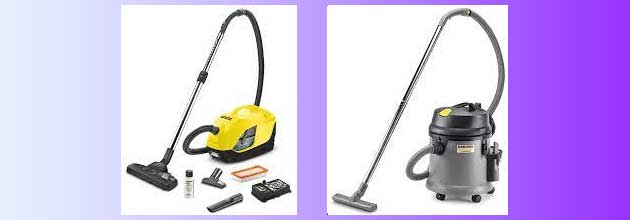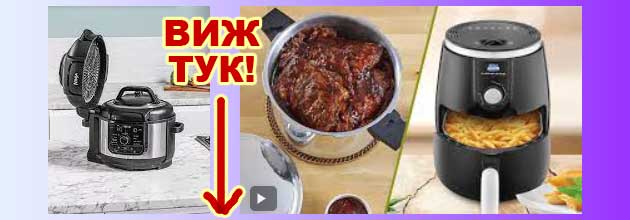Германската компания Керхер е известна с производството на висококачествени почистващи уреди. Тяхната гама от прахосмукачки също се слави с високо качество и надеждност.
Безкабелни модели прахосмукачки Керхер
Безкабелните модели на Керхер са удобни за използване благодарение на свободата от кабели, понеже не се притесняваш, че нещо ти се мотае из краката и те спъва, и можеш да отидеш и на другия край на къщата без никакъв проблем.. Моделите VC 7 Cordless yourMax, VC 6 Cordless ourFamily и VC 4 Cordless myHome разполагат с мощни литиево-йонни батерии, които осигуряват до 60 минути автономна работа. Те са леки и маневрени, a активните подови накрайници гарантират ефективно почистване. Филтърните системи осигуряват чист отработен въздух.
Класически модели
Класическите модели на Керхер с кабел също се отличават с висока мощност и ефективност. Те са подходящи както за домашна употреба, така и за по-тежки задачи като почистване след ремонти. Моделите SE 5.100, VC5, WD5 и WD3 се отличават с добра маневреност, богат набор от аксесоари и вградени места за съхранение.
Моделите от серията NT Tact с барабани с обем 30 до 65 литра пък са идеални за работа в големи пространства и за тежки приложения.
За по-специфични нужди
Ако търсите прахосмукачка само за прозорци, моделът WV 6 Plus Window Vac е отличен избор. За мокро и сухо почистване пък се препоръчват моделите от сериите Wet/Dry, и по-специално WD 6 P Premium с регулируема мощност и автоматично почистване на филтъра.
Вижте и ТОВА: Коя е най-добрата вертикална прахосмукачка Керхер? Мнения. Перяща машина Karcher SE 4001 и др. Класация топ 10, идеи.
Прахосмукачка за мокро и сухо почистване Kärcher
Това е специализиран модел прахосмукачка, предназначена както за изсмукване на сухи отпадъци, така и за почистване на разливи от течности.
Принцип на действие
Устройството разполага със специален филтър, който може да работи както на сухо, така и на мокро без да се налага смяна. Основният резервоар е изработен от неръждаема стомана с обем 30 литра. Мощният 1300-ватов двигател осигурява силен вакуум за бързо почистване.
Предимства
- Висока мощност, подходяща за трудно изпълними задачи
- Голям резервоар от 30 литра
- Автоматично почистване на филтъра
- Вграден щепсел за захранване на електроинструменти
- Лесно изпразване на течностите
Недостатъци
- Едри размери, неудобни за съхранение
- Силна шума по време на работа
Препоръки за употреба
За оптимални резултати е добре да се използва торба за прах при сухо почистване. Така филтърът няма да се запушва толкова бързо. Препоръчително е и редовно почистване на филтъра с натискане на бутона за автоматично обдухване или ръчно измиване. За мокро почистване първо трябва да се извади торбата за прах.
Това е многофункционално устройство, което се справя както с ежедневни задачи, така и с по-тежки предизвикателства като големи количества отпадъци или разливи на течности.
Мнения на клиентите
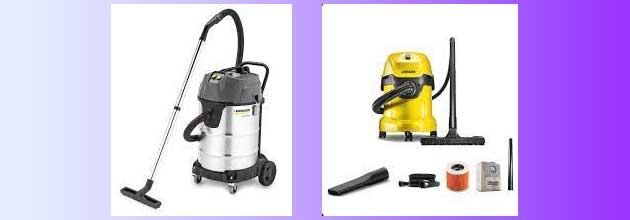 Прахосмукачката за мокро и сухо почистване Керхер предизвиква смесени чувства сред клиентите. Много от тях оценяват високата ѝ мощност и способността да почиства както сухи, така и мокри замърсявания. Силният вакуум и големият резервоар са сред най-харесваните характеристики.
Прахосмукачката за мокро и сухо почистване Керхер предизвиква смесени чувства сред клиентите. Много от тях оценяват високата ѝ мощност и способността да почиства както сухи, така и мокри замърсявания. Силният вакуум и големият резервоар са сред най-харесваните характеристики.
Същевременно обаче, някои клиенти споделят оплаквания относно едрите размери на уреда, които го правят труден за съхранение. Други отбелязват, че шумът по време на работа е твърде силен. Трети пък смятат, че липсват достатъчно аксесоари в комплекта.
Въпреки минусите обаче, повечето ревюта са положителни. Клиентите оценяват високата производителност и многофункционалност на уреда. Препоръчват го за хора, които често се занимават с поддръжка, ремонти или други дейности, съпроводени с мръсотия и разливи. Макар и обемен, според тях предимствата на уреда компенсират недостатъците за целевата аудитория.
Други модели Керхер
Прахосмукачка Керхер VC 7 Cordless yourMax
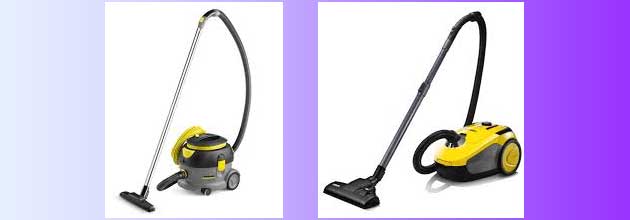 Този безкабелен модел се отличава с иновативна сензорна технология за разпознаване на праха, която автоматично регулира мощността за по-ефективно използване на батерията. Разполага с до 60 минути работа на едно зареждане. Лесен е за употреба и много удобен за домашни задачи. Стенният държач е едновременно станция за зареждане.
Този безкабелен модел се отличава с иновативна сензорна технология за разпознаване на праха, която автоматично регулира мощността за по-ефективно използване на батерията. Разполага с до 60 минути работа на едно зареждане. Лесен е за употреба и много удобен за домашни задачи. Стенният държач е едновременно станция за зареждане.
Прахосмукачка Керхер WD 3 Premium
Класически модел от гамата за мокро и сухо почистване, позволяващ лесен преход между видовете замърсяване без смяна на филтъра. Има резервоар от 17 литра и мощен 1000-ватов мотор. Подходящ е за тежки задачи като почистване след ремонти, но и за ежедневна домашна употреба. Има удобно съхранение на кабели и аксесоари.
Прахосмукачка Керхер NT 65/2 Tact2
Професионален модел с голям 65-литров резервоар, идеален за работа в големи пространства и при наличие на големи количества мръсотии или течни разливи. Подходящ е за строителни обекти, гаражи, работилници. Разполага с мощен 2200-ватов двигател. Лесно мобилен благодарение на големите колела.
Прахосмукачка Керхер SE 5.100
Компактен и лек уред с 4-литров резервоар, подходящ за почистване в дома и офиса. Има тристепенна филтрация и вградено място за съхранение на аксесоарите. Отличава се с тиха работа, дълъг кабел от 10 метра и удобство при работа под ниски мебели.
Сравнение с други марки
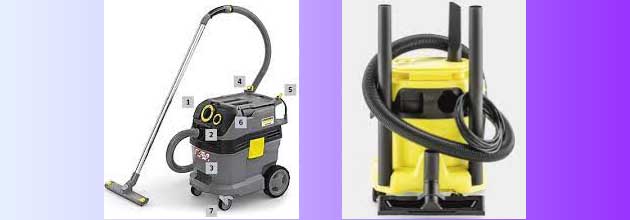 Един от основните конкуренти на Керхер в сегмента на висококачествените прахосмукачки е британската марка Dyson. Нейните безжични модели също се славят с висока мощност и иновативни технологии.
Един от основните конкуренти на Керхер в сегмента на висококачествените прахосмукачки е британската марка Dyson. Нейните безжични модели също се славят с висока мощност и иновативни технологии.
Например флагманският модел Dyson Outsize Absolute разполага с циклонна технология и мощен дигитален мотор. Той постига до 290 AW засмукваща мощ.
В сравнение с него прахосмукачката за мокро и сухо почистване WD 6 P Premium на Керхер има 1300 вата мощност и 472 AW максимална сила на засмукване според тестове.
Така че по отношение на чистата засмукваща мощ Керхер има предимство. От друга страна обаче Dyson печели с по-компактните размери, по-ниско тегло и по-тиха работа.
При цените също има значителна разлика – моделът на Dyson струва около 700 евро, докато този на Керхер е около 220 евро.
Така че изборът зависи изцяло от нуждите и предпочитанията на клиента. Dyson предлага по-иновативно и компактно решение, но на по-висока цена. Керхер от своя страна има непревземаема мощ, но е по-обемен и шумен.
Поддръжка и почистване
 Редовното почистване на филтъра е от ключово значение за оптимална производителност. Препоръчва се след всяка употреба да натискате бутона за автоматично филтър почистване. Това премахва натрупания прах във филтъра.
Редовното почистване на филтъра е от ключово значение за оптимална производителност. Препоръчва се след всяка употреба да натискате бутона за автоматично филтър почистване. Това премахва натрупания прах във филтъра.
Алтернативно можете да извадите филтъра и да го изплакнете под течаща вода. Уверете се, че е напълно сух преди да го поставите отново на мястото му.
Торбата за прах също трябва редовно да се сменя, за да не се намали мощността на засмукване. Когато чуете висок тон от двигателя, е време за смяна на торбата.
За мокро почистване първо извадете торбата за прах. След това можете да почистите резервоара отвътре с вода от маркуча. Накрая го подсушете добре преди съхранение.
При работа с електрически инструменти фиксирайте добре адаптера към уреда за добро уплътнение. Включвайте и изключвайте почистването ръчно или използвайте автоматичния режим за синхронизация с инструмента.
Следвайте тези съвети за оптимална работа и продължителна издръжливост на своята прахосмукачка Керхер.
Вижте и ТОВА: Разлика между мултикукър и фрайър. Мнения. Конвектомат за вкъщи. Мултикукър и еър фрайър в едно.

Margarita Alexieva is an editor in numerous health departments of various national and regional daily and weekly newspapers and magazines. She has been in journalism since 1992, and in recent years she has been mainly focused on the topics of news, healthcare and medicine.

